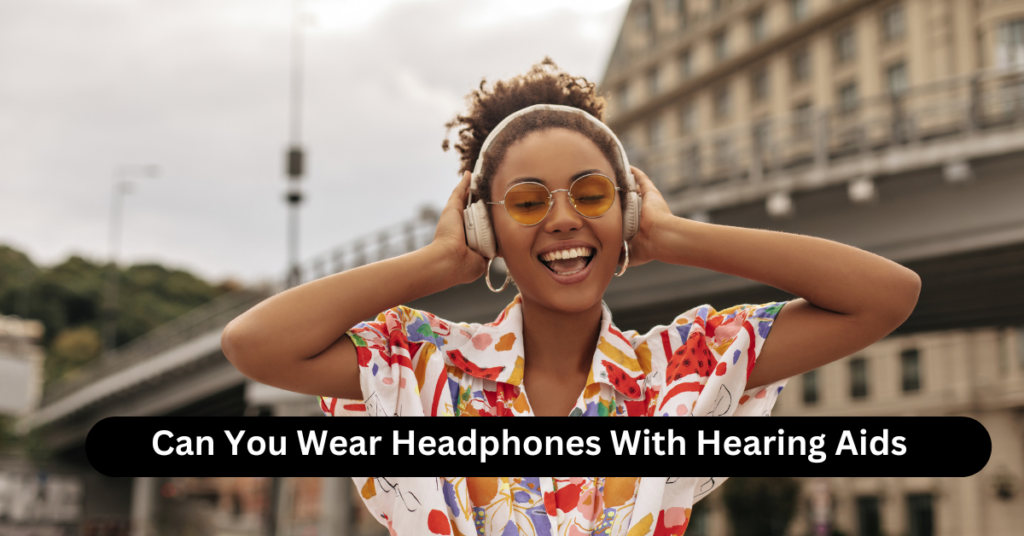Discover the harmony Can You Wear Headphones With Hearing Aids in our comprehensive guide. Unveil solutions and possibilities for enjoying music and audio, empowering those with hearing aids to embrace a world of sound seamlessly.
Navigating the world of audio can be a symphony of challenges for those with hearing aids. The desire to immerse oneself in music or catch up on a favorite podcast is universal, yet the clash between headphones and hearing aids often presents a barrier. The longing to experience sound just like everyone else is palpable.
The good news? It’s a resounding yes! While the harmony between headphones and hearing aids may seem elusive, there’s a medley of solutions waiting to be explored. Let’s uncover the melody of possibilities for those seeking to bridge the gap between hearing aids and the world of audio.
Can You Wear Headphones With Hearing Aids
Yes, it’s possible to wear headphones with hearing aids, although it might require some adjustments or specific types of headphones.
Some people prefer to use over-ear headphones or ones that don’t interfere with the hearing aids behind the ears. It’s essential to find a comfortable setup that works well for both the hearing aids and the headphones.
Some hearing aids are designed to work seamlessly with Bluetooth devices like headphones, making it easier to stream audio directly. If you’re considering this setup, it might be helpful to discuss options with your audiologist or hearing aid provider for the best solution tailored to your needs.
Challenges of wearing headphones with hearing aids:

Navigating the realm of audio experiences poses distinct challenges for individuals wearing hearing aids, particularly when it comes to using headphones.
One primary hurdle lies in the physical compatibility between these two devices. Various headphone styles—on-ear, over-ear, and in-ear—often clash with different types of hearing aids, such as behind-the-ear or in-the-ear models.
This clash frequently leads to discomfort, pressure, and fitting issues, creating an impediment to seamless usage. The pressure exerted by headphone cushions, especially in over-ear designs, can interfere with the placement and stability of hearing aids, impacting both comfort and effectiveness.
Audio interference emerges as another substantial challenge. When headphones and hearing aids coexist, the convergence of sound sources often results in feedback loops and sound distortion.
This overlapping creates an auditory clash, causing disruptions and compromising the quality of sound received through the hearing aids. This interference not only impedes the clarity of audio but also detracts from the overall listening experience, exacerbating the challenge for those dependent on hearing aids.
Beyond discomfort and audio disruption, there’s a crucial concern regarding increased hearing damage risk. The amalgamation of amplified sound from headphones and the existing aid amplification can potentially lead to unsafe listening levels.
This augmented exposure to loud audio increases the risk of further hearing damage. It emphasizes the need for individuals with hearing aids to adhere to safe listening practices rigorously. Cautionary measures, such as limiting volume levels and taking breaks from extended listening sessions, become imperative to mitigate the risk of exacerbating hearing impairments.
In essence, the challenges associated with wearing headphones alongside hearing aids encompass physical discomfort, audio disturbances, and the heightened risk of hearing damage. Addressing these challenges demands innovative solutions and heightened awareness of safe listening practices to ensure a harmonious blend of audio experiences without compromising hearing health.
Solutions and tips for successful headphone use:

When it comes to successfully integrating headphones with hearing aids, several strategies can enhance the experience and usability of individuals seeking a seamless audio solution.
Choosing the right headphones is crucial. Opt for styles that complement hearing aids, such as bone conduction headphones that bypass the ears, thereby minimizing discomfort and interference with hearing aid placement. Additionally, consider features like Bluetooth connectivity, allowing for wireless pairing with hearing aids and reducing the hassle of tangled wires or physical obstructions.
Fine-tuning hearing aid settings plays a pivotal role in optimizing audio quality when using headphones. Some hearing aids offer specific programs tailored for headphone use. These programs adjust settings to mitigate feedback and improve sound clarity, ensuring a more harmonious listening experience.
Adhering to safe listening practices is paramount, especially with combined hearing aid and headphone amplification. Follow guidelines for recommended volume levels and durations to safeguard against potential hearing damage. Take periodic breaks during extended listening sessions to give your ears a rest and minimize the risk of overexposure to amplified sound.
Embrace technological advancements that facilitate seamless integration. Look for headphones and hearing aids that offer direct streaming capabilities through Bluetooth-enabled devices.
This feature enables audio to be streamed directly to the hearing aids, bypassing external headphones altogether. It not only enhances convenience but also preserves sound quality without the complications associated with traditional headphone use.
In summary, selecting compatible headphones, optimizing hearing aid settings, practicing safe listening habits, and leveraging technological innovations pave the way for successful headphone use with hearing aids. These strategies empower individuals to enjoy audio content comfortably and efficiently while safeguarding their hearing health.
Conclusion:
In the quest Can You Wear Headphones With Hearing Aids, challenges like physical compatibility and audio interference loom large. However, emerging solutions offer a glimmer of hope. From tailored headphone styles to advanced technology and safe listening practices, the landscape is evolving. As we navigate this intersection, a blend of innovation, user adaptation, and awareness leads the way, promising a future where individuals with hearing aids can seamlessly enjoy the world of audio with comfort and clarity.
